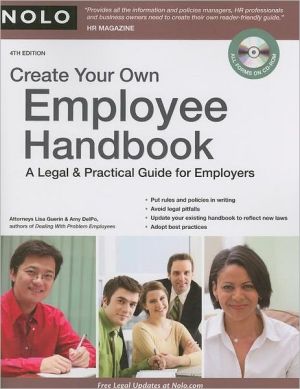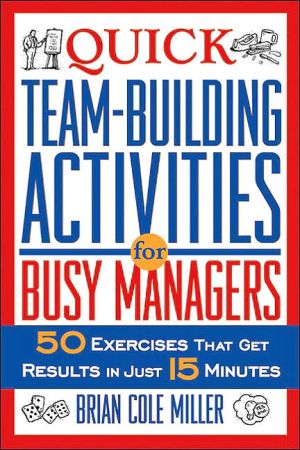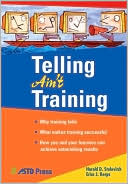Create Your Own Employee Handbook: A Legal and Practical Guide for Employers
About the Author:\ During her years as a law student at Boalt Hall School of \ Law at the University of California at Berkeley, Lisa worked for Nolo as a \ research and editorial assistant. After a stint as a staff attorney at the \ U.S. Court of Appeals for the Ninth \ Circuit, Lisa worked primarily in the field of employment law, in both \ government and private practice. Lisa recently rejoined the staff at Nolo, where \ she is the co-author of Nolo’s Pocket Guide to California Law.\...
Search in google:
Whether your business has a few employees or several thousand, providing them with a handbook that spells out your company s benefits, policies and procedures makes great sense, practically and legally. Create Your Own Employee Handbook provides all the information and policies managers, HR professionals and business owners need to create their own reader-friendly guide. Each chapter covers a different topic, including: *at-will employment *hiring *pay and payroll *workdays and hours *performance evaluations *benefits *discrimination and harassment *complaints and investigations *leave health and safety *substance abuse *privacy in the workplace *discipline Each chapter first explains the legal and practical considerations that apply to its topic, then supplies sample policies that readers can use as-is or tailor to meet their needs. A CD-ROM lets readers cut-and-paste the policies to create their own handbook instantly. Sarasota Herald-Tribune Lets you cut and paste standard policies into your own employee handbook, modifying them as needed.
Introduction\ If you're like most employers, you (or people who work for you) probably devote a good part of every day to employee relations. You may find yourself making decisions or relaying information about everything from benefits to vacation time to disciplinary problems. Sometimes, you may know the answer right away ("You get ten vacation days"); other times, you may have to think a bit or come up with something new ("What is our policy on paternity leave?").\ In such situations, a good employee handbook is as essential as any real live member of your management team. It knows all the answers -- and it communicates them clearly to your employees. Indeed, an employee handbook can do a lot for you, such as:\ \ save you time by cutting down on the number of questions employees ask every day\ ensure that you treat your employees consistently, and\ give you legal protection when an employment relationship goes sour.\ \ We talk more about these benefits in Section A, below; we explain how this book can help you create an effective handbook in Section B.\ What an Employee Handbook Can Do for Your Business\ Simply defined, an employee handbook is a written document describing the benefits and responsibilities of the employment relationship. In reality, however, the handbook's role is much more complex and powerful. While it sits quietly on the shelf, the employee handbook can actually help you manage and control your relationship with your employees.\ 1. The Purposes of an Employee Handbook\ An employee handbook is an indispensable workplace tool, because it can help you communicate with your employees, manage your workforce (and your managers), streamline your organization and protect your business from lawsuits. We cover each of these benefits in detail below.\ a. Communication\ Your handbook tells your employees what your company expects from them and what they can expect from the company. "What time do I have to be at work?" "Does my employer provide health insurance?" "How do I complain about my supervisor's sexual advances?" A well-drafted handbook will answer all of these questions and many more.\ In addition to relaying basic information about benefits, hours and pay, your employee handbook imparts your company's culture, values and history. When was your company founded? Why do you think it is successful? What attitude do you want your employees to take towards their jobs and customers?\ As you take our standard policies and modify them to suit your workplace, remember this most basic and obvious aspect of employee handbooks: Through the written policies, you are talking to your employees. Make sure you are saying what you want to say in the way you want to say it.\ b. Management\ Workers are not mind readers. Although you may know what your practices and policies are, without a handbook, employees, managers and supervisors have no place to turn for this information. This creates an environment ripe for trouble, both legal and practical. Employee morale will drop if some employees are treated differently from others, and you might find yourself involved in a discrimination lawsuit if employees think that this inconsistent treatment is based on race, gender or some other protected characteristic.\ Handbooks promote positive employee relations by ensuring that all of your employees get treated consistently and fairly. They prevent misunderstandings, confusion and complaints by giving everyone in your workplace the same resource for learning your personnel practices. If there is ever any doubt or dispute about a particular policy, you can simply open the book and take a look. You don't need to have long, agonizing discussions or try to reinvent the wheel.\ c. Planning\ The process of creating your handbook will force you to think about every aspect of your relationship with your employees. Rather than doing things just because that's the way they've always been done, you can reflect on how you have been treating your employees and decide whether any changes are in order. For each policy, ask yourself: Do I really want to continue doing things this way? If so, why?\ Creating an employee handbook necessarily requires you to communicate with, and get feedback from, supervisors and employees about your current personnel practices. In this way, you learn what works and what doesn't, what is enhancing employee morale and what is dampening it.\ d. Legal Protection\ Just having a handbook on your shelf can help you comply with the law and cut your risk of lawsuits:\ \ Some laws require employers to communicate certain information to their employees. The handbook provides you with a convenient place to put this information.\ Even when you aren't required to give information to your employees, there are times when you can protect yourself by providing it. For example, no law requires you to tell your employees how to complain about sexual harassment, but if you do, you can use the complaint policy as a defense should someone ever sue you. (You can find a sexual harassment policy in Chapter 19.)\ Your policies can affirm your commitment to equal employment opportunity laws. This is one step toward creating a tolerant and discrimination-free workplace -- something that most employers are legally obligated to do. (You can find standard equal employment opportunity policies in Chapter 3.)\ In certain situations, your company will be responsible for the actions of its employees and supervisors who violate the law, even if the company did not condone or even know about the illegal conduct. Cut down the risk of unlawful behavior by providing guidance and prohibitions in your handbook.\ \ Perhaps the most important reason to have an employee handbook is to protect your legal right to terminate employees at will. In theory, you already have this right. Unless you have entered into a contract with an employee promising something else, your relationship with that employee is automatically at will -- meaning you can terminate the employment relationship at any time for any reason that is not illegal, and the employee can do the same.\ However, the absence of a written contract doesn't fully protect you. You can inadvertently destroy your right to terminate at will by creating an implied contract with your employees, promising not to fire them unless you have a legitimate business reason. Some employers with badly written handbooks have gotten burned over this issue. Courts have found that certain statements in their handbooks -- including that employees will only be fired for certain reasons, that employees won't be fired if they are doing a good job or that employees are considered "permanent" -- created implied contracts that limited the employers' right to fire at will. (For more on at-will employment and implied contracts, see Chapter 2.)\ In this book, we help you avoid this trap by providing you with standard policies that steer clear of any promises of continued employment and by providing disclaimers that specifically state that employment relationships at your company are at will.\ 2. What an Employee Handbook Is Not\ Your handbook can do a lot, but it can't do everything, nor should it. As we explain more fully in this section, a handbook is just one piece of your employee relations picture. It's up to you, your managers and supervisors to provide the other pieces.\ a. Your Handbook Is No Substitute for You\ Although your handbook is an important communication tool, it cannot take the place of one-on-one personal interaction between you and the people who work for you. If you want good employee relations -- that is, if you want your employees to trust you and feel loyal to you -- your employee handbook can help, but it can't do the job on its own. Your employees need a human face behind the policies. They need to see and hear from you and to feel that you are interested in them and the job they are doing.\ b. Your Handbook Is No Substitute for Good Practices\ No matter how many policies you write, they won't do you any good unless you follow them. In fact, they might actually do some harm.\ From a practical standpoint, personnel practices that are inconsistent with written policies can damage employee relations. Employees who read one thing but experience another won't trust -- or feel loyal to -- their employer.\ From a legal standpoint, you are courting trouble if you don't deliver what you promise in your handbook. Even though you will have disclaimers in your handbook telling employees that the handbook is not a contract (see Chapter 1 for these disclaimers), you can't predict when a judge or jury will think differently and try to hold you to your words -- or at least make you pay for not following them. For these reasons, you should include in your handbook only those policies that you are prepared to follow.\ c. Your Handbook Is Not a Personnel Policy Manual\ Employee handbooks are written in general terms, for use by employees. A policy or procedures manual, on the other hand, is a detailed guide that sets out very specifically how supervisors and managers are to do their jobs in your company. Usually, employees are not allowed access to these manuals.\ You may wonder why you can't just have one book for both audiences. There are a number of reasons:\ \ There might be sensitive information (on pay scales, for example) that you don't necessarily want to reveal to your employees.\ Employees don't need to know every little detail of how things are done. If you throw too much information at your employees -- some of it irrelevant to their day-to-day work -- they might get overwhelmed and not read the handbook at all.\ The details of how you implement policies are more likely to change than the general policies themselves. If you put these details in your handbook, you limit your ability to change how things are done.\ \ Who Can Use This Book\ This book is for business owners, managers, supervisors and human resource professionals in any size company, from a small outfit with only a handful of employees to a large corporation. It is also appropriate for virtually every industry, from manufacturing to sales to service provision.\ There are two types of workplaces for which this book won't work: public workplaces (that is, workplaces with federal, state or local government employees) and unionized workplaces.\ Icons Used in This Book\ To aid you in using this book, we use the following icons:\ The caution icon warns you of potential problems.\ This icon indicates that the information is a useful tip.\ This icon refers you to helpful books or other resources.\ This icon indicates when you should consider consulting an attorney or other expert.\ This icon refers you to a further discussion of the topic somewhere else in this book.
I. Introduction H. How to Use This Book 1. Handbook Introduction 2. At-Will Protections 3. Hiring 4. New Employee Information 5. Employee Classifications 6. Hours 7. Pay Policies 8. Employee Benefits 9. Use of Company Property 10. Leave and Time Off 11. Performance 12. Workplace Behavior 13. Health and Safety 14. Employee Privacy 15. Computers, Email and the Internet 16. Employee Records 17. Drugs and Alcohol 18. Trade Secrets and Conflicts of Interest 19. Discrimination and Harassment 20. Complaint Policies 21. Ending Employment Appendix A. How to Use the CD-ROM Appendix B. Model Handbook Appendix C. Where to Go for Further Information
\ Accounting TodayHas all the information and advice you'll need to clearly communicate your firm's policies and procedures.\ \ \ \ \ EntrepreneurialConnection.comYou don't have shell out big bucks to a professional handbook developer. Instead, turn to the pages of Create Your Own Employee Handbook.\ \ \ HR MagazineCreate Your Own Employee Handbook provides all the information and policies managers, HR professionals and business owners need to create their own reader-friendly guide.\ \ \ \ \ Sarasota Herald-TribuneLets you cut and paste standard policies into your own employee handbook, modifying them as needed.\ \ \ \ \ Washington Post"Create Your own Employee Handbook, published by Nolo, can help owners put their own handbooks together..."\ \ \ \ \ HR MagazineCreate Your Own Employee Handbook provides all the information and policies managers, HR professionals and business owners need to create their own reader-friendly guide.\ \ \ \ \ Sarasota Herald-TribuneLets you cut and paste standard policies into your own employee handbook, modifying them as needed.\ \ \ \ \ Washington PostCreate Your own Employee Handbook, published by Nolo, can help owners put their own handbooks together.\ \








